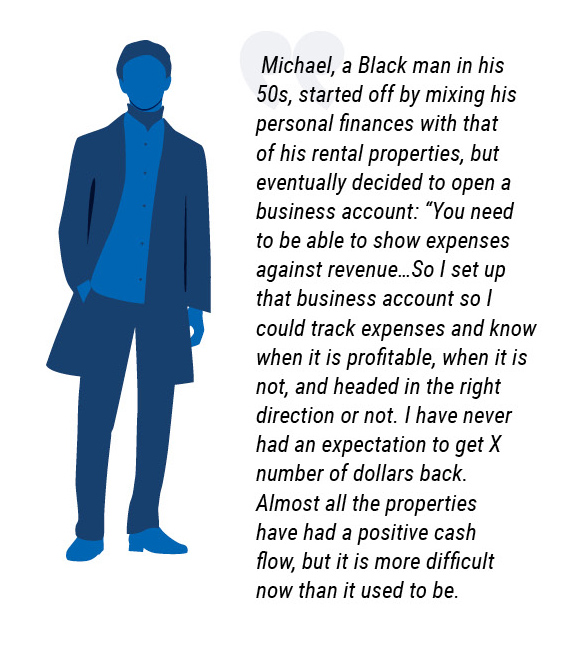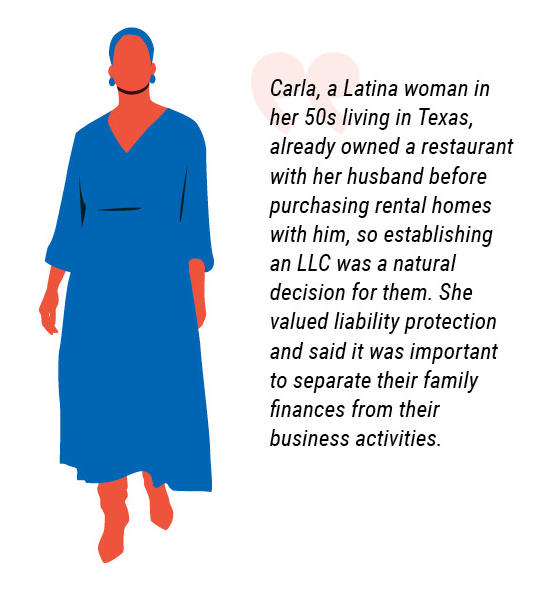Small, independent landlords—sometimes called “mom and pop” landlords—typically own just one or two rental homes or apartments but, in aggregate, they provide 40% of all U.S. rental housing.
This brief explores opportunities for leaders in philanthropy, financial services, housing, policy, and other sectors to engage with small, independent landlords to enhance the impact of their strategies to support asset building, housing affordability, small businesses, and racial economic justice. It also identifies opportunities to work with Black and other landlords of color to support racial economic justice efforts focused on wealth preservation and renters’ financial well-being.
KEY INSIGHTS ABOUT SMALL, INDEPENDENT LANDLORDS
-
Small, independent landlords are the primary providers of the lowest-cost type of private-market rental housing.
-
There is no typical small, independent landlord—they follow deeply individualized journeys. People’s personal reasons for becoming landlords are unique.
-
Small, independent landlords and their tenants in nearly every community tend to have similar financial challenges, particularly lack of positive cash flow and inadequate savings.


-
Less than 10% of small, independent landlords are business entities. Most of the rest would not benefit financially by becoming small businesses. They still, however, have unmet financial and product service needs.
-
While most small, independent landlords use rent payments as current income, they also think of their rental properties as part of their personal wealth-building journey.
summary of recommeNDATIONS
The recommendations are designed to help ensure that these landlords can sustain their properties, provide quality rental housing to lower-income households, build wealth, and support intergenerational wealth transfers.
They are tailored to be relevant for leaders in philanthropy, the financial services industry, the housing industry, and public policy who are working in the fields of asset-building, intergenerational wealth, housing security, small business, and racial economic justice.
Increase the knowledge base about small, independent landlords through public data collection and high-quality, representative surveys.
Help stakeholders understand the opportunities to simultaneously improve the financial security of both small, independent landlords and their renters.
Foster mentorship networks that connect small, independent landlords with each other for peer exchange and community-building.
Consider small, independent landlords of color as stakeholders in racial economic justice initiatives.
Help small, independent landlords access high-quality financial products and services that are designed with their needs in mind.
Identify and educate leaders about public policy changes and government service delivery improvements that would help low-wealth small, independent landlords preserve their assets over time and across generations.
CONCLUSION
Small, independent landlords play an important role in the provision of stable and affordable housing, which is central to renters’ financial security—even though the landlords are often relatively financially insecure themselves. These landlords and their tenants struggle with liquidity, cash flow, and housing conditions related to maintenance and repair. These common challenges create opportunities for strategies focused on all three areas. Likewise, working with small, independent landlords is essential in local efforts to support housing affordability and ensure that low-income renters have decent shelter.

This publication was sponsored by:
